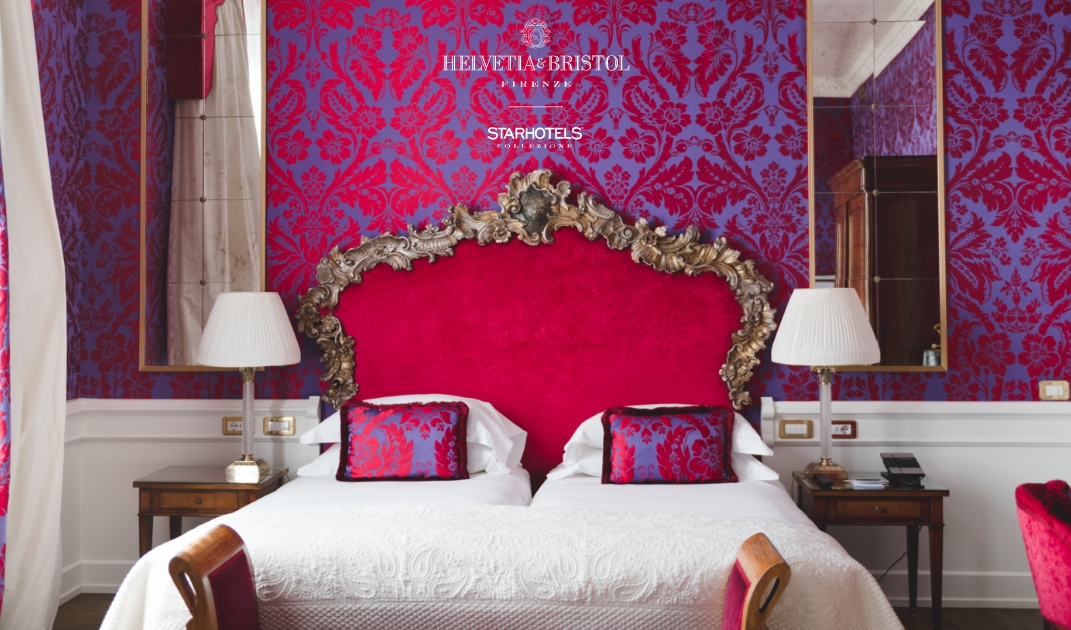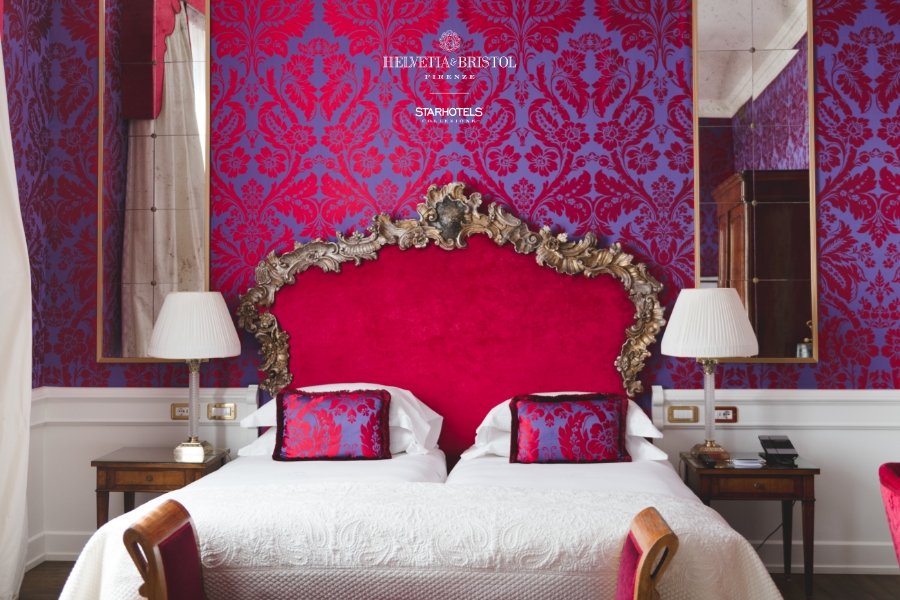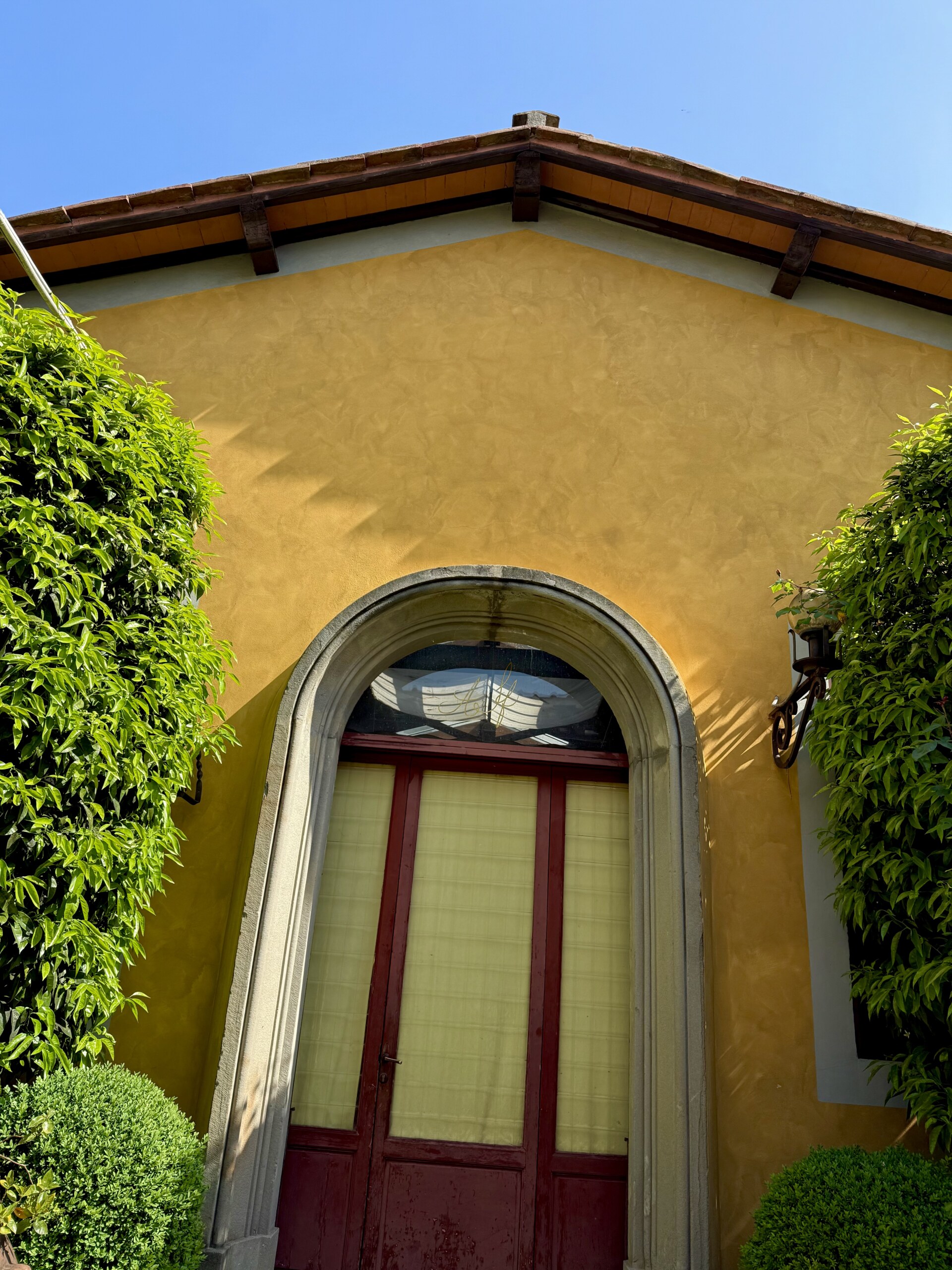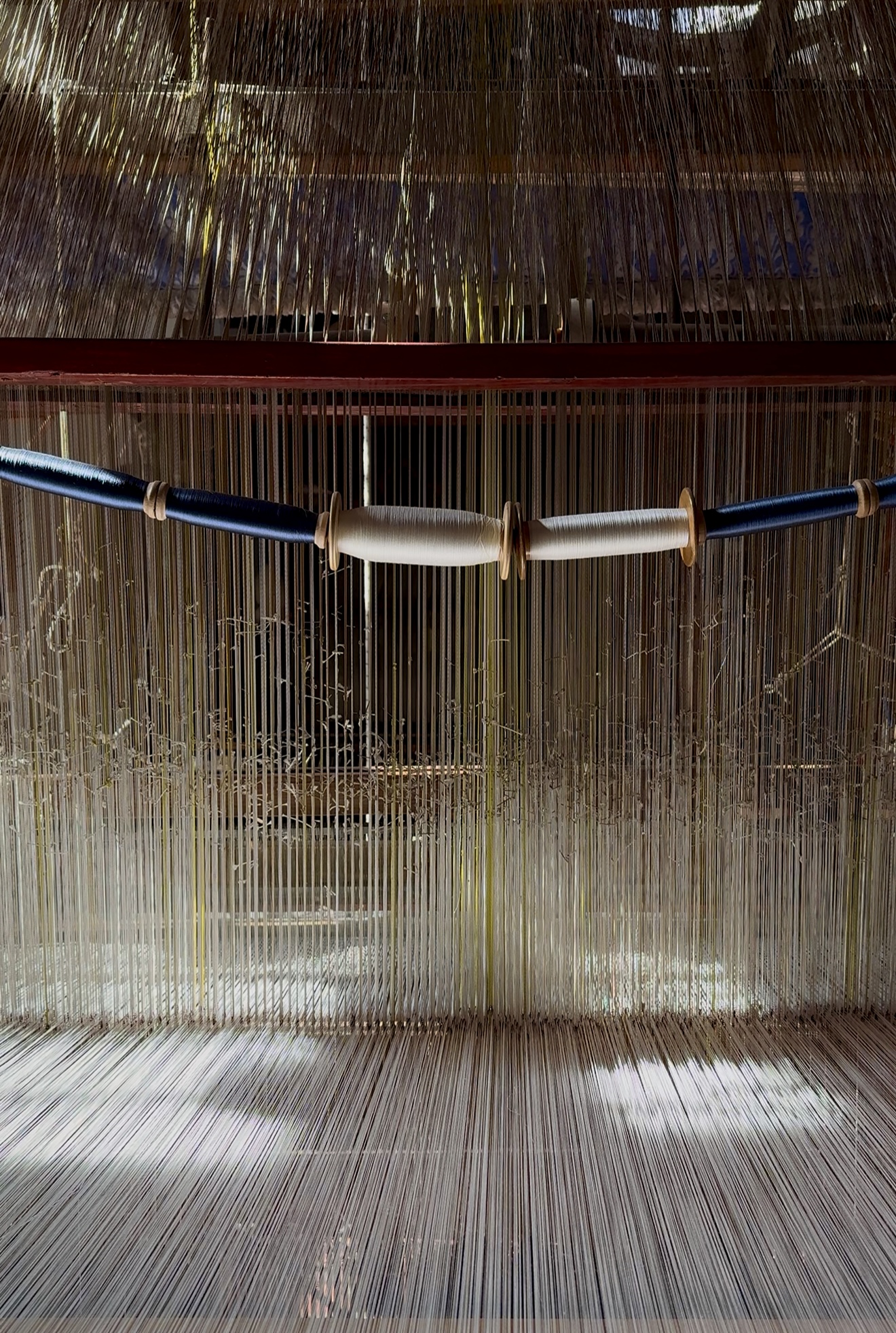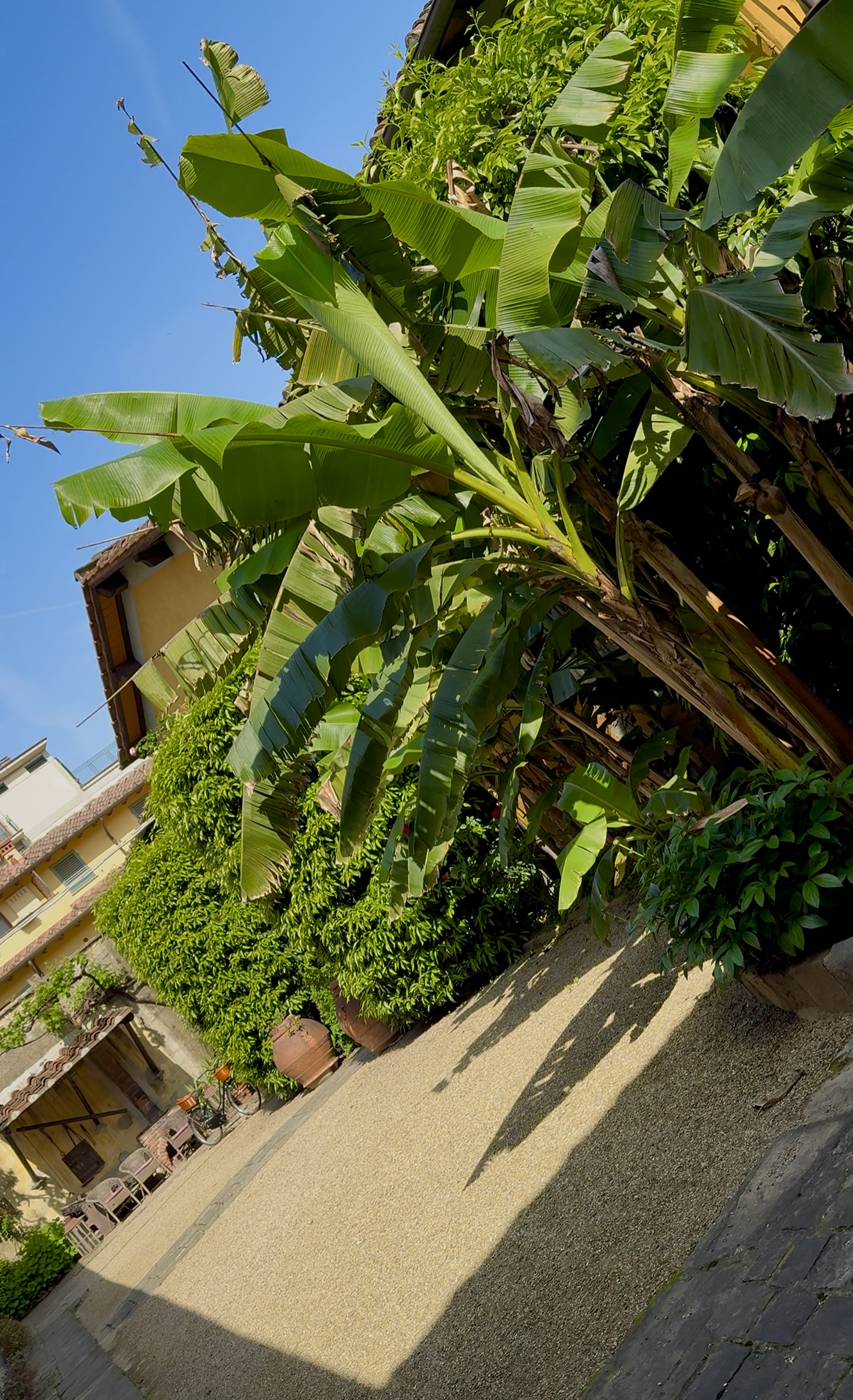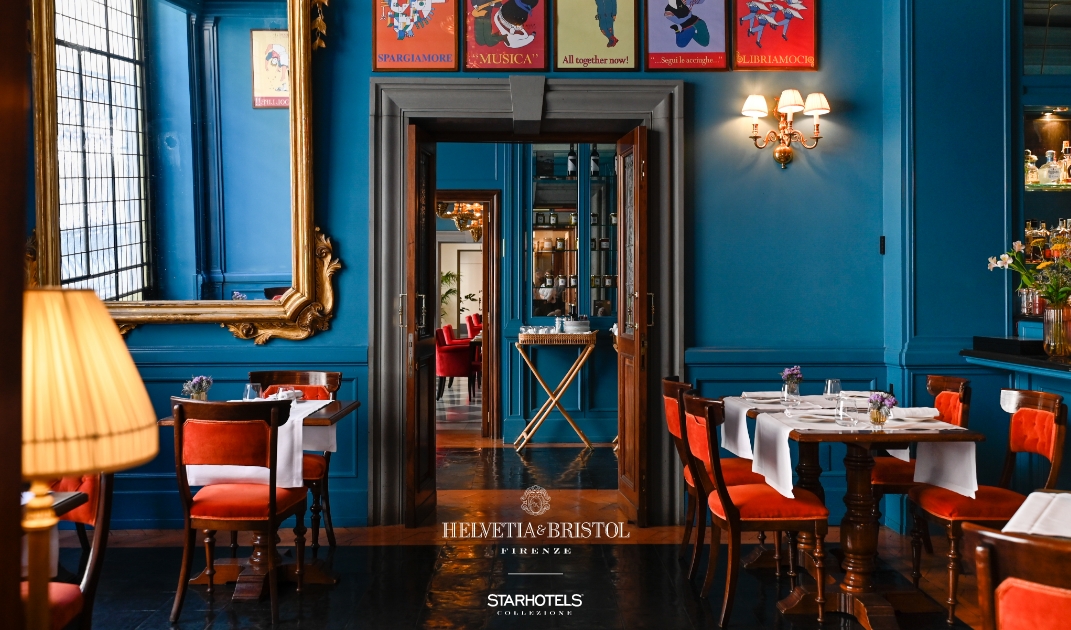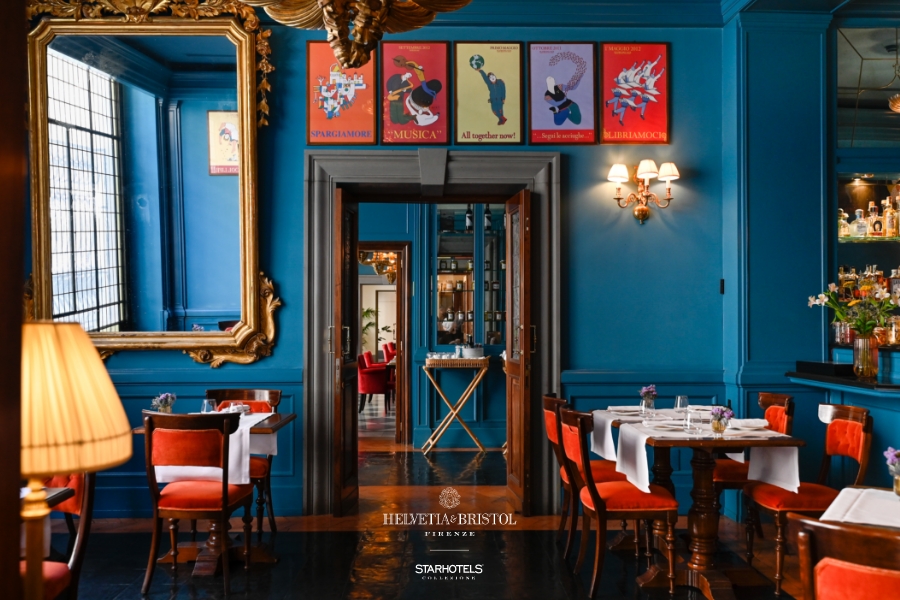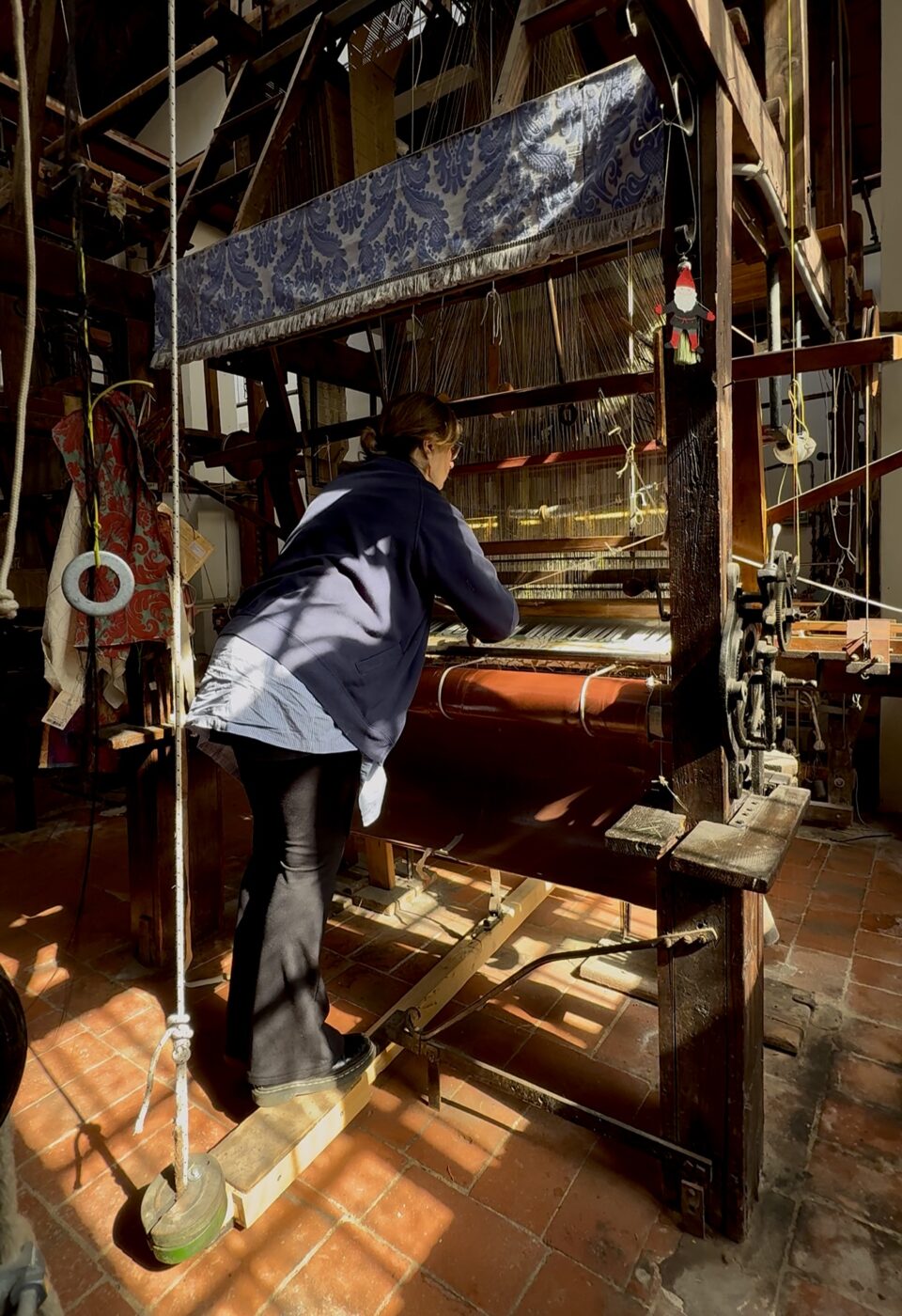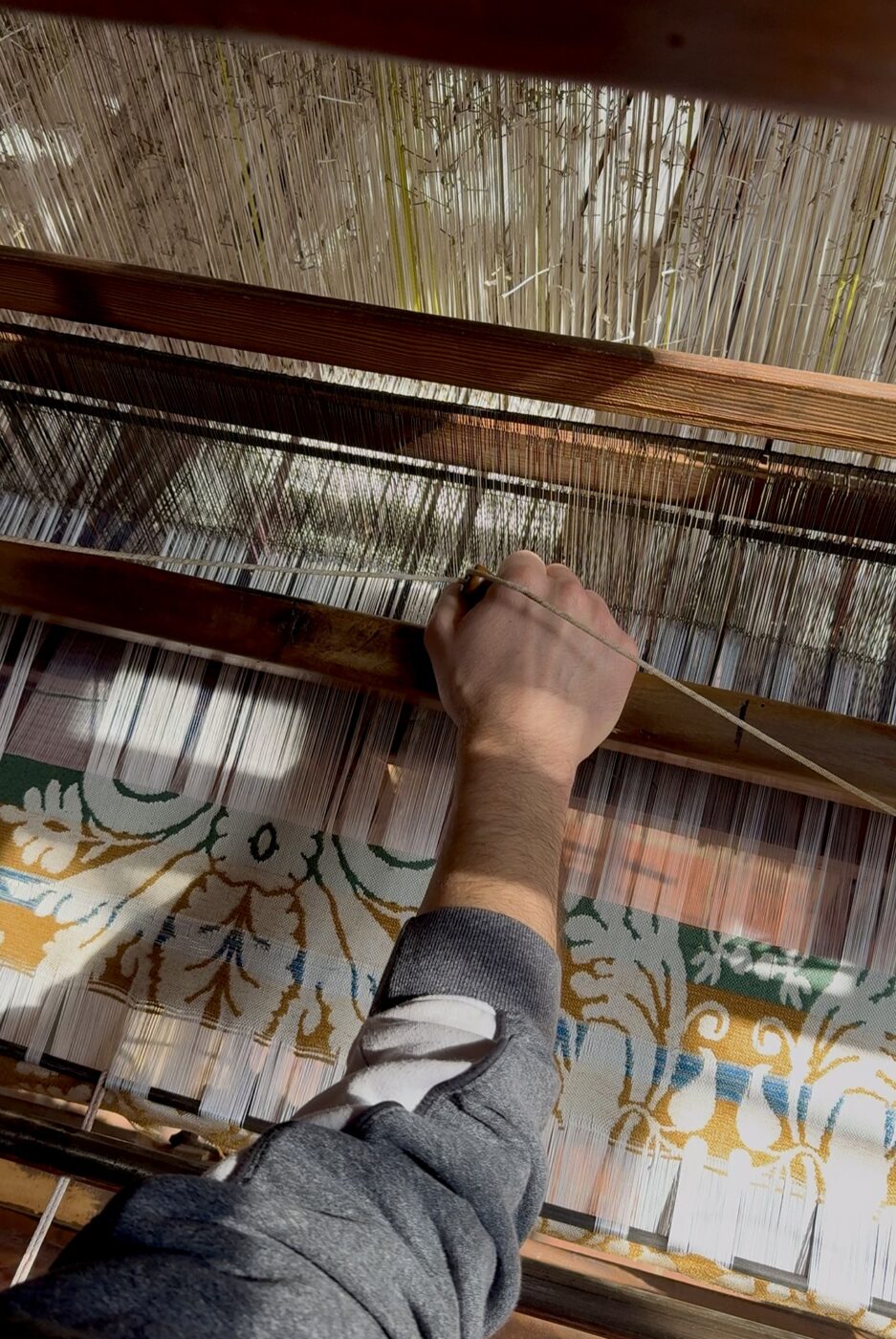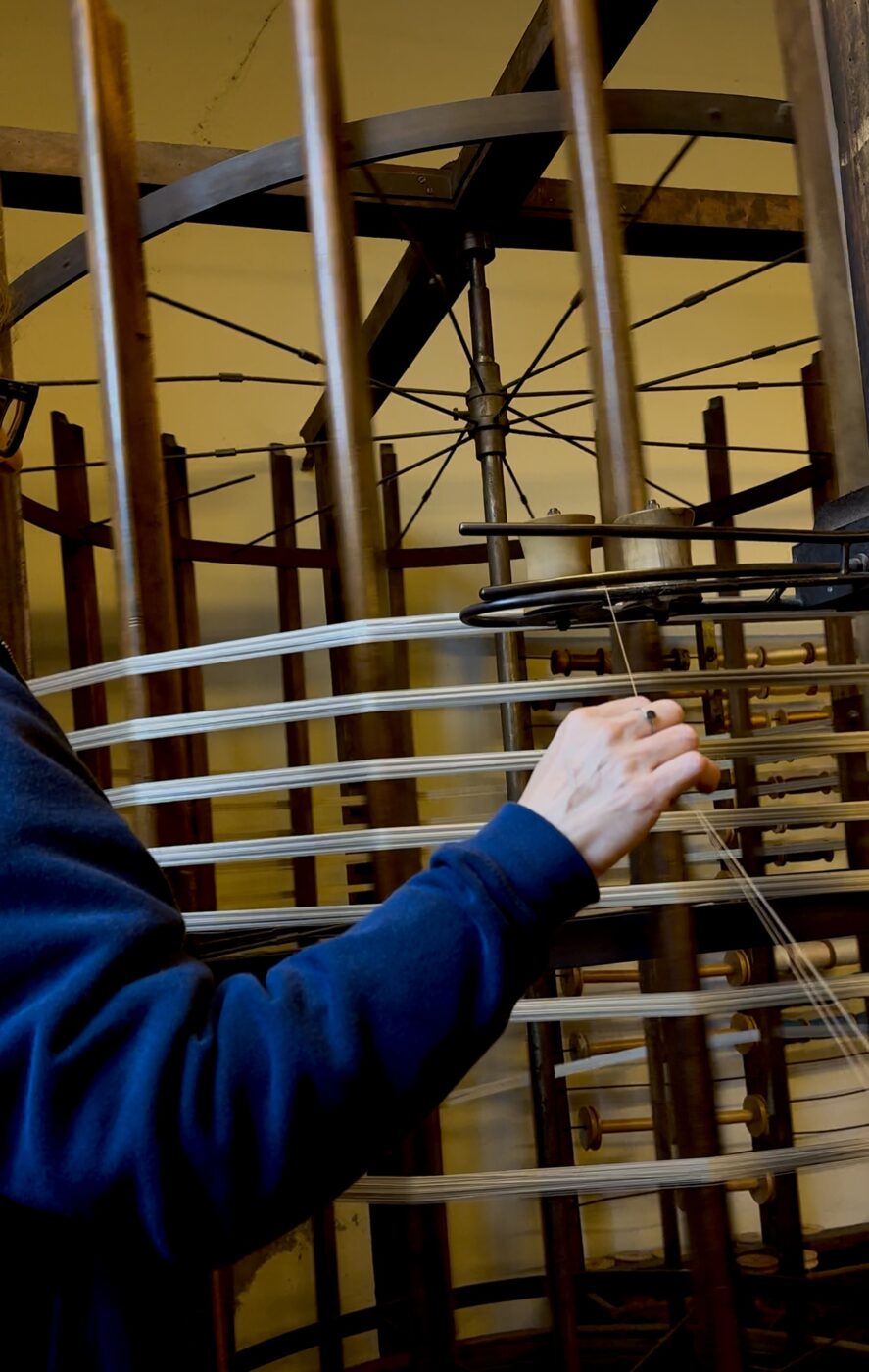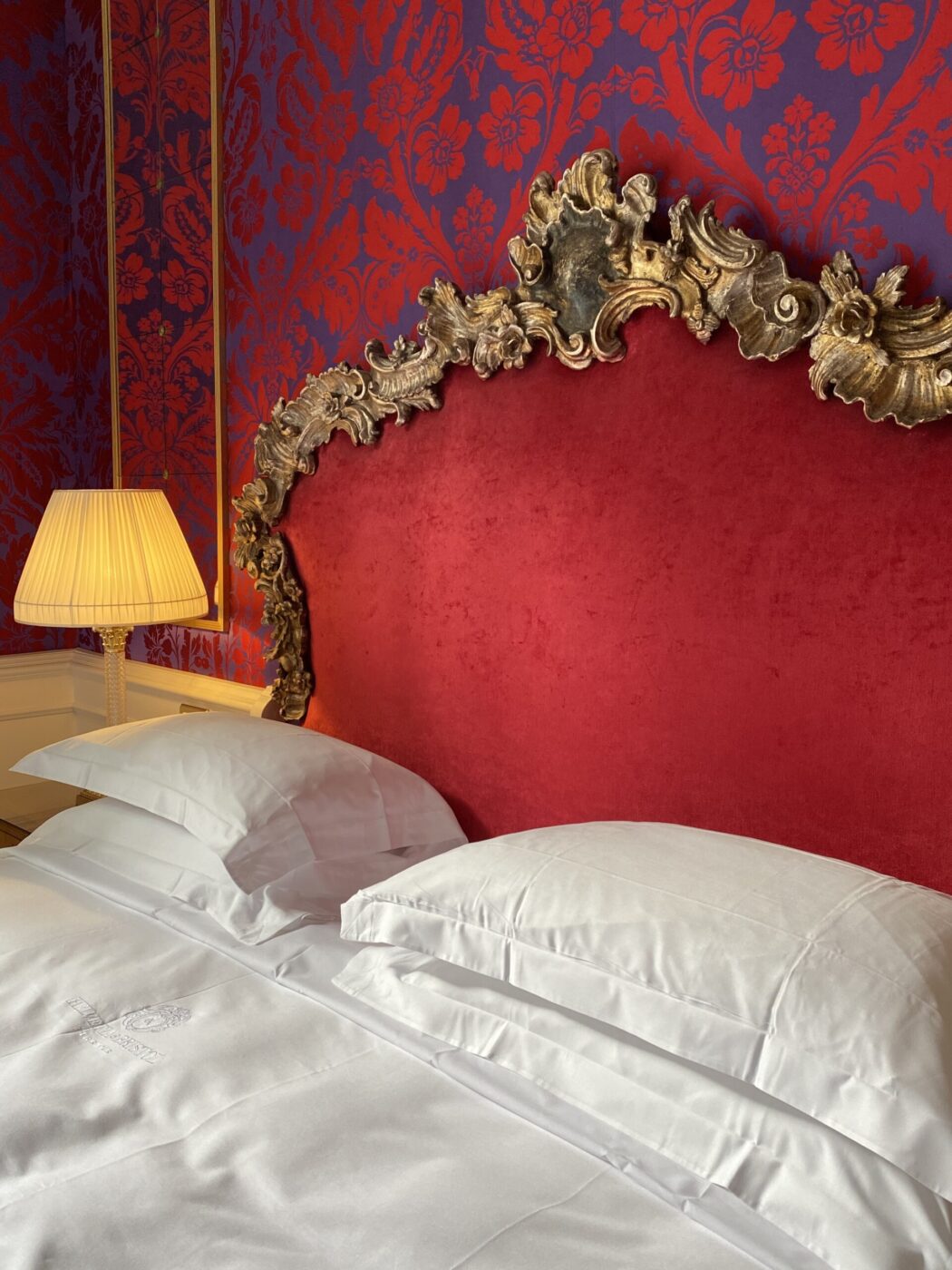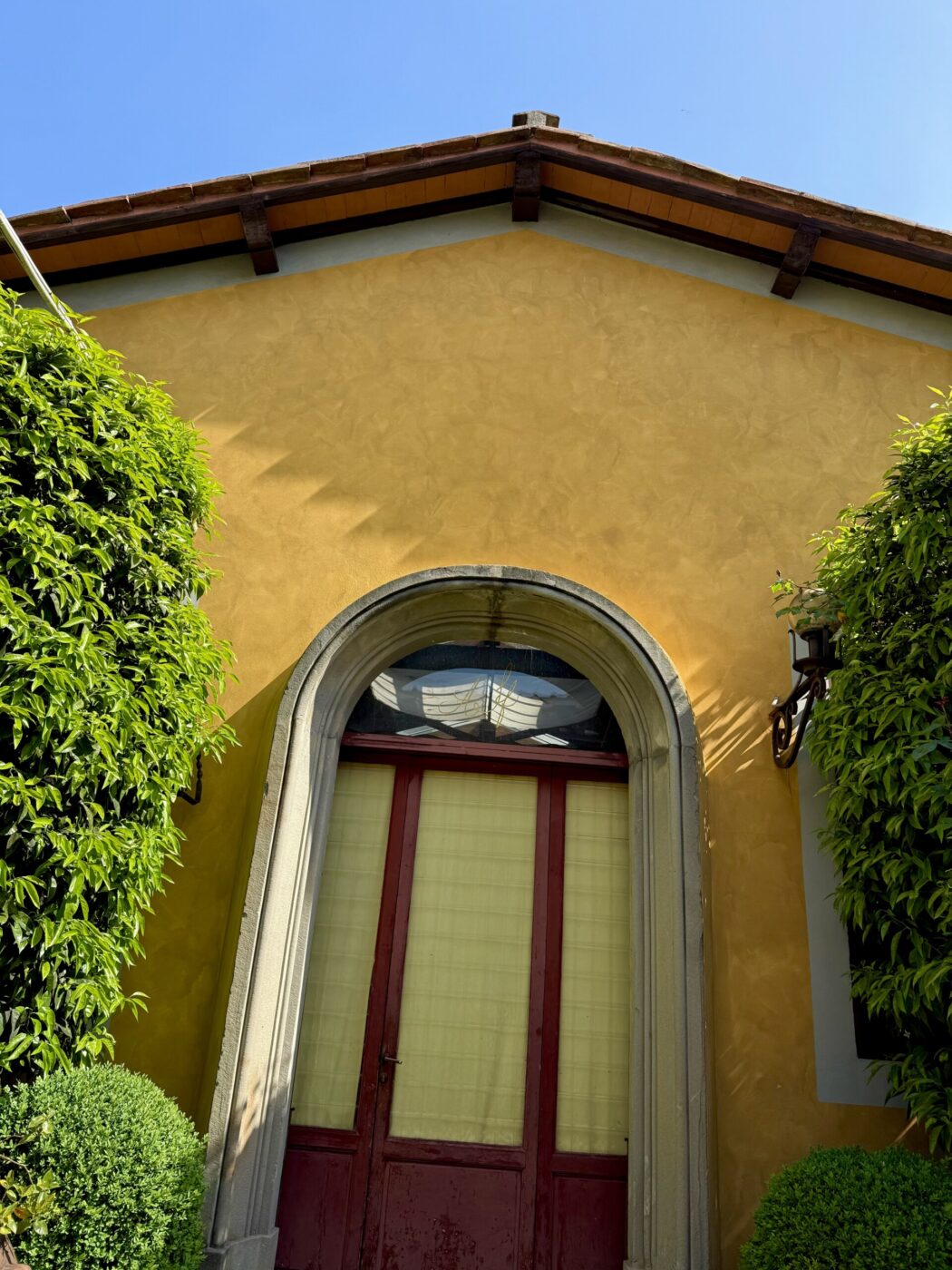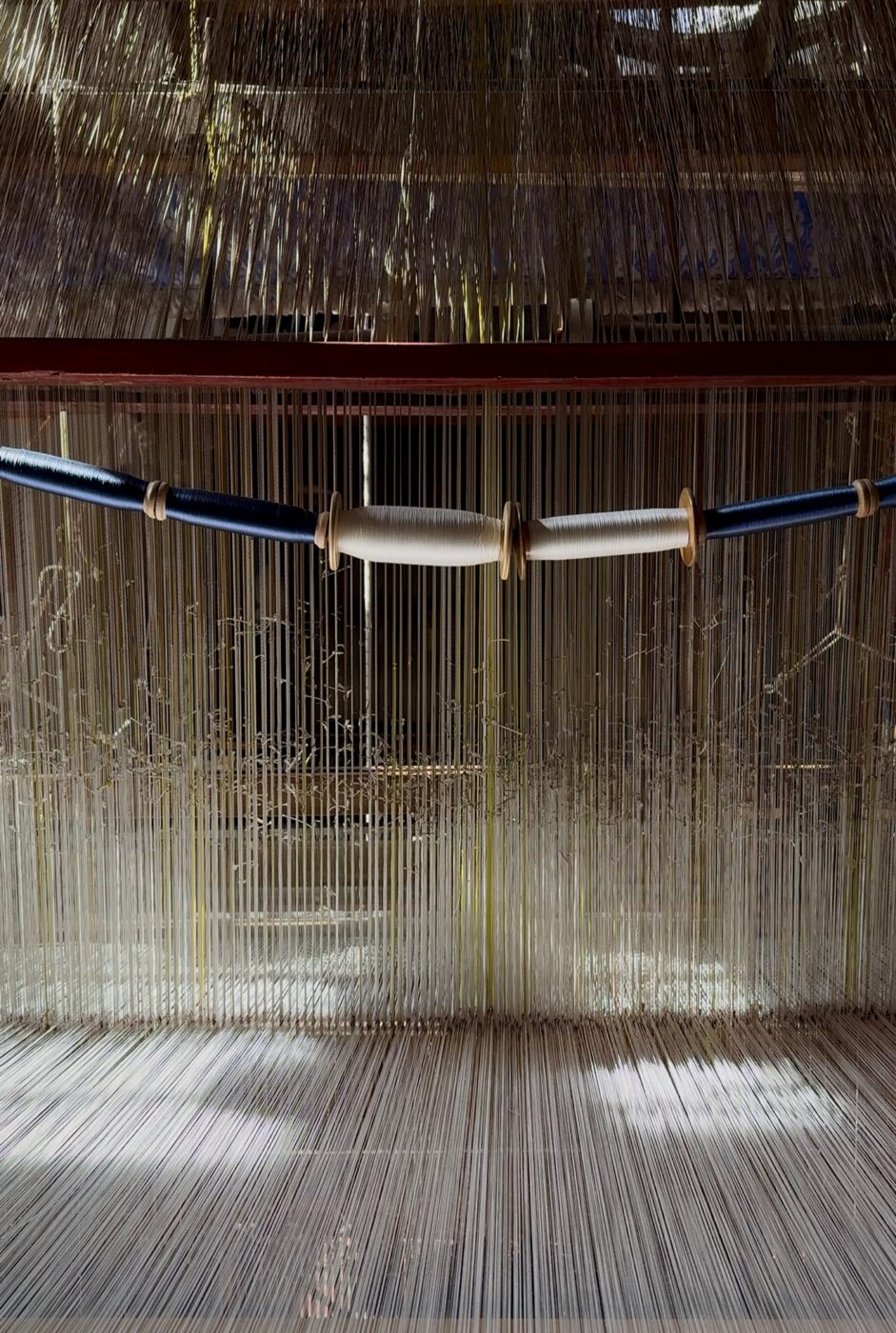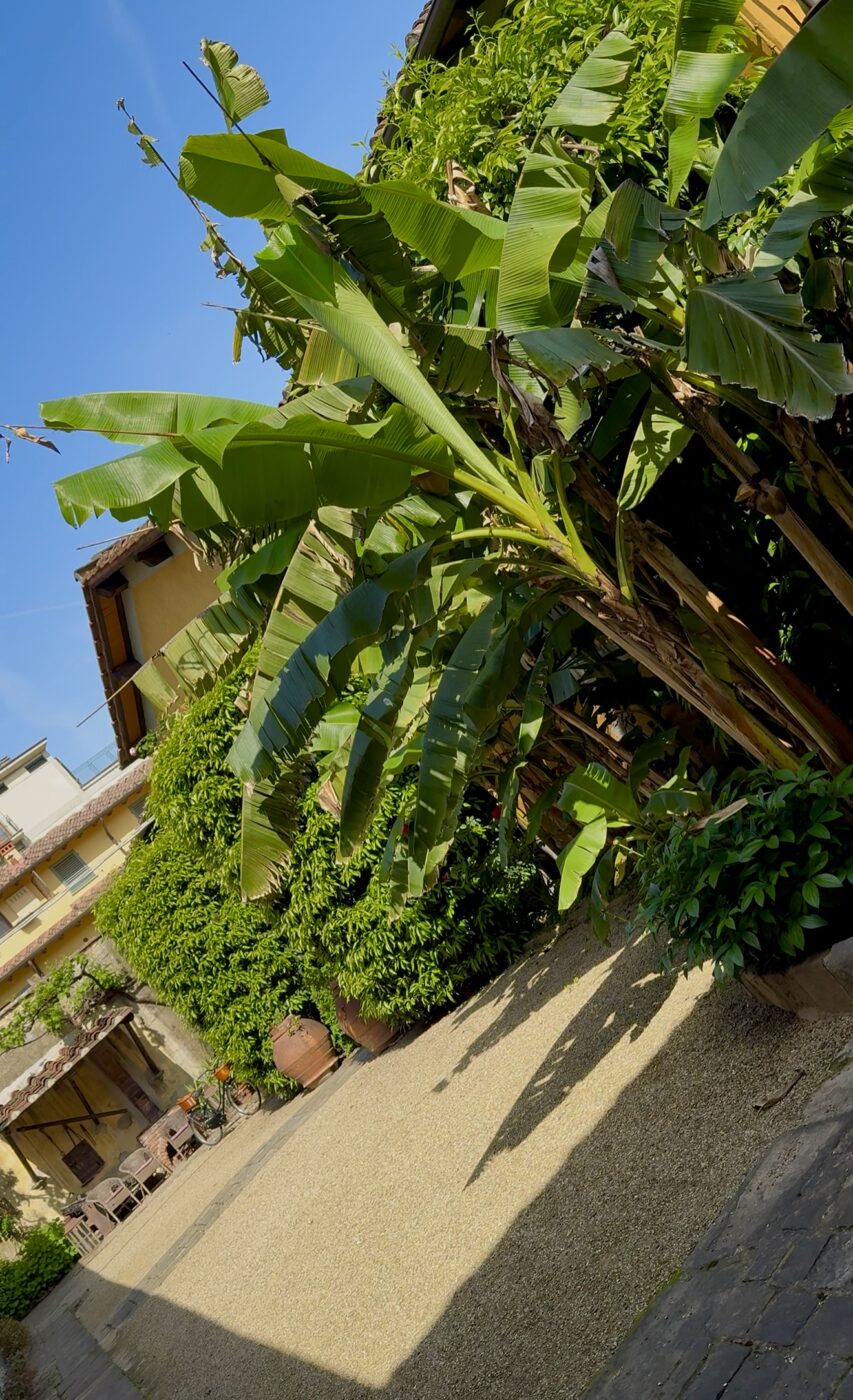In the quiet backstreets of Florence’s San Frediano, past the polished shopfronts and tourist chatter, through a cobbled courtyard full of banana trees, there is a place where history is not preserved under glass but lived, every day, in the rhythm of handlooms and the hum of silk threads. Antico Setificio Fiorentino is not a museum, though it could be mistaken for one. Even on an early Wednesday morning, it is a bustling workshop, founded in 1786 by a consortium of noble families determined to protect the city’s silk-weaving traditions, and it has survived revolutions, floods, and the rush of industrialization without ever abandoning its patient art.
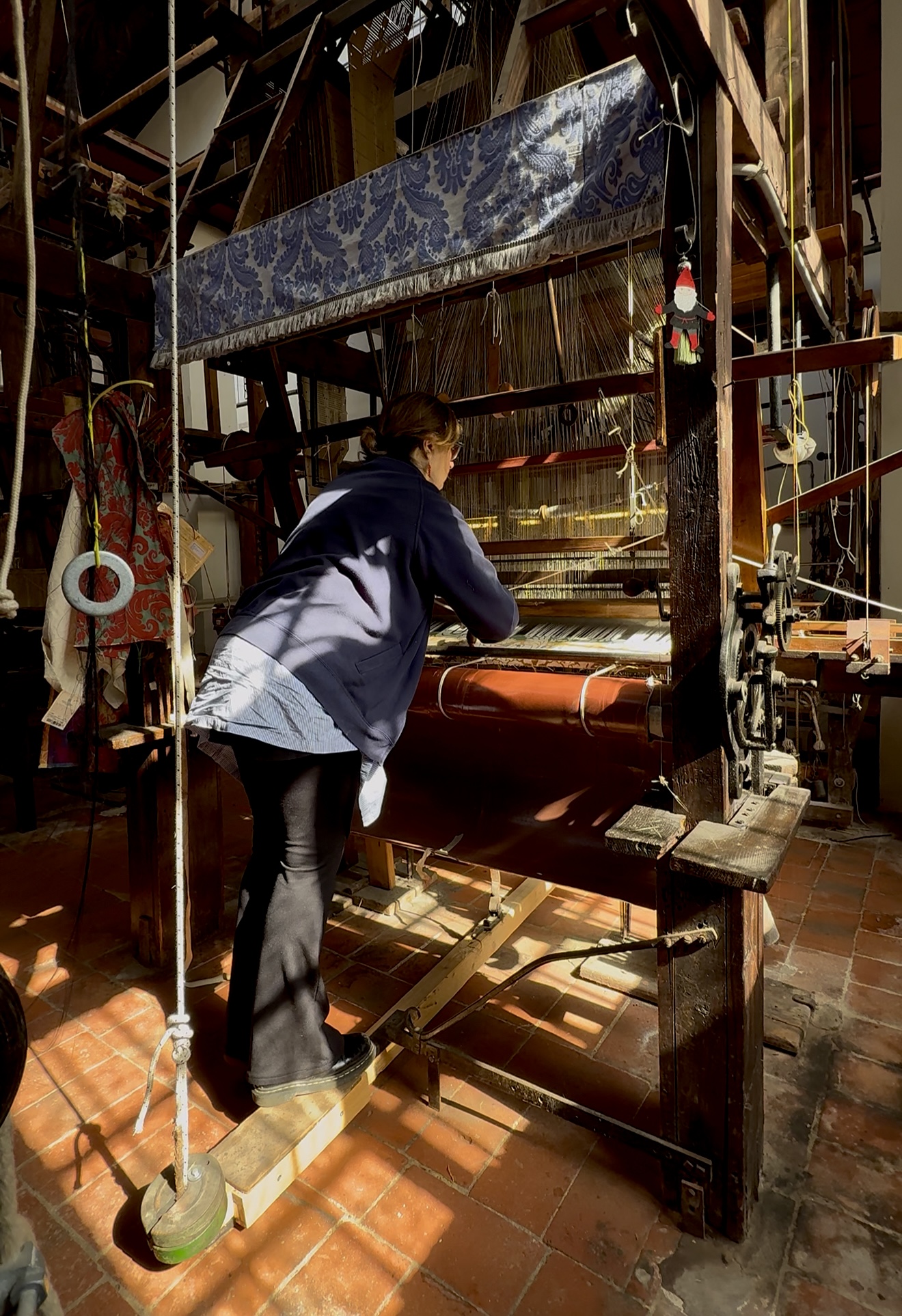
Daniela operating one of the looms
There are handlooms, from the mid-1700s, that make brocatelle and damask and mid-1800s semi-mechanical looms for solids, stripes, and checks. The fabrics produced are enchanting, their beauty heightened by the lustrous, almost magical play of color and light. Some, like the Ermisino, shimmer between hues—a rich violet turning suddenly to deep red depending on how the fabric moves. Here, silk is crafted into ribbons, pillows, curtains, tablecloths, and upholstery that seem almost too exquisite to touch.
Much of the Setificio’s magic lies in its archive—and the historic designs that they continue to produce today. Medieval textiles are simple, with small repetitive floral motifs. As weaving techniques evolved during the Renaissance, the designs became more elaborate and delicate, with increasingly complex and dynamic patterns unfurling across the silk. During this time period, each of Florence’s noble families—Frescobaldi, Corsini, Guicciardini, Gherardesca—had a signature textile design commissioned from Antico Setificio. “It is said that for the firstborn of each family, a new design was created that was exclusive to that family until their death,” says Maria Rita Agliolo Gallitto, from the Setificio’s marketing team. These fabrics are dense with symbols—pomegranates for abundance and resurrection, acanthus leaves for longevity, pinecones for fertility.
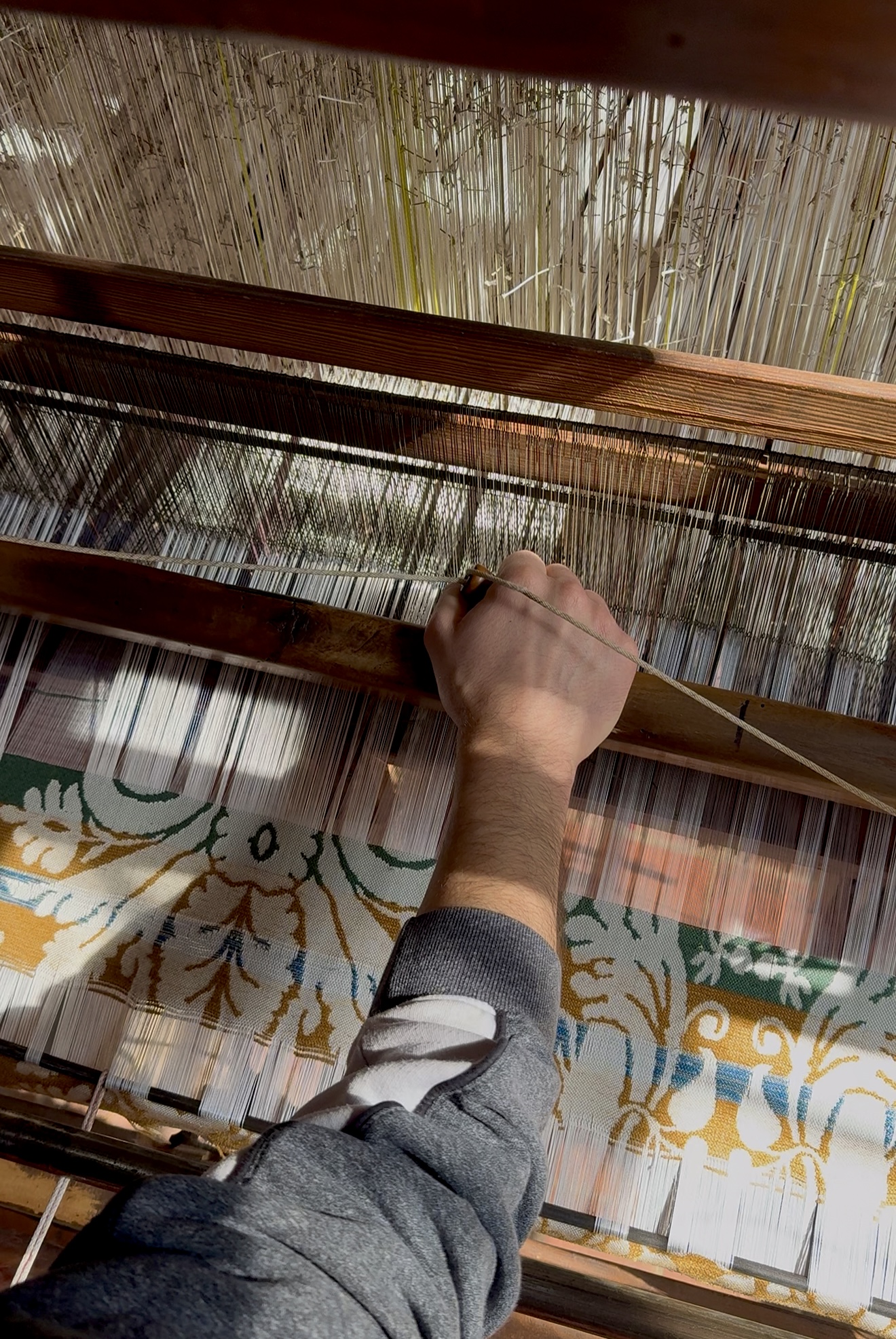
A Renaissance-era design in the works
Some of these motifs have lived extraordinary afterlives. The Doria damask (created for the noble Genovese family), for instance, rich with pomegranate symbolism, adorned the chasuble worn by Pope Francis during a mass celebrated in Florence in 2015. Also in Florence, the fabrics’ legacy is carried forward by Helvetia & Bristol, where tapestries and seating in the Junior Suite View Helvetia are made with a custom version of the historic Frescobaldi damask. With its rich cherry red and Specchio di Venere purple, the distinctive satin-backed textile was crafted specifically for the hotel by Antico Setificio Fiorentino. (This commitment to bespoke craftsmanship reflects Starhotels’ philosophy—one that inspired La Grande Bellezza – The Dream Factory, the group’s long-term initiative celebrating Italian artisanal excellence in collaboration with OMA – Associazione Osservatorio dei Mestieri d’Arte, Fondazione Cologni dei Mestieri d’Arte and Gruppo Editoriale. The initiative also brings together outstanding masters of the arts to contribute to hotel renovations.)
At Antico Setificio, innovation has found its thread as surely as tradition. One major source of pride is a wonder of Renaissance ingenuity: a warping machine made in the 18th century based on a design by Leonardo da Vinci, and still used today for passementerie production. Shaped like a giant vertical drum mounted on a stand, the “orditoio” is turned by hand, each full revolution winding meters of warp thread in perfectly measured loops. Before its invention, measuring and arranging warp threads required vast open spaces and painstaking handwork. The orditoio condensed this monumental task into an efficient, elegant system operated within a compact space, dramatically reducing the time and labor required to prepare the silk for weaving. The silk threads are fed onto the machine through glass loops; over time, silk’s tensile strength is so powerful that it would have sliced through wood, Maria Rita explains. “Or even iron,” weaver Daniela adds.
Also revolutionary was the Jacquard machine, an early 19th-century marvel that operates via perforated cards—an ancestor of binary code. “The system works with holes and solid spaces,” says Maria Rita. “Like 1s and 0s.”

The orditoio designed by Michelangelo
“It’s the nonno of the computer,” says Luana, who operates the machine. Each line on the card represents a single pass of the shuttle, and hundreds of them are strung together to create patterns of astonishing complexity.
Regardless of how many centuries of “innovation” they have under their belt, the Setificio requires time to complete each project. The semi-mechanical looms produce eight to ten meters a day, while most handmade fabrics yield just two meters a day; a damask like the one on the walls of Helvetia & Bristol, even less, inching forward at barely one meter a day. One to two months for a fabric to be prepared, woven, rested, and finished. In an era that worships speed, the Setificio demands patience—and rewards it with the most sumptuous fabrics imaginable.
For silks of this caliber, many are willing to wait. The Setificio has made silks not just for hotels like Helvetia & Bristol but also for the Tribune of the Uffizi and Andrea Bocelli (worn in the form of Stefano Ricci jackets), partnered with Dolce & Gabbana for a show at Palazzo Vecchio, and recreated a dress worn by Eleonora di Toledo, whose portrait by Alessandro Allori hangs in Palazzo Vecchio. Visitors to the Setificio can now see the full-scale recreation of her gown.

The Junior Suite View Helvetia with custom damask
For all the glory and grandeur of its finished product, the workshop remains deeply human in scale. Many of its artisans have worked here for decades, passing on their knowledge to younger apprentices who, like Maria Rita herself, learn to see the looms not as relics but as living collaborators. Maria Rita introduces Fabrizio, who’s been at the Setificio for 30 plus years. “He repairs the pieces,” she says. “Since the machines are antique, there are no spare parts on the market anymore—so he crafts them himself.” These machines have endured not just the erosion of time but sudden calamities too. During the great flood of the Arno River in 1966, water rose high enough to submerge much of the workshop.
Even disaster could not wash away the Setificio’s spirit. What endures here is not nostalgia—this is not a monument to a lost past—but a demonstration that even ancient traditions can be useful in the modern day, especially when good taste (and good curtains) never go out of style.
Since 2010, the Setificio has been part of the Stefano Ricci group. “Our commitment is not only to tradition but, more importantly, to the future of craftsmanship as an authentic expression of skill and artistry,” Filippo Ricci, CEO of Antico Setificio Fiorentino, tells us, explaining the dedication to “ensuring the continuity of a textile production cherished by royal households, institutional and museum spaces, and prestigious international residences.”
That said, the Setificio demands a love for beauty that exceeds the easy demands of modern life.
“This is a reality that continues,” Maria Rita says. “Not because it is easy, but because it is precious.”
